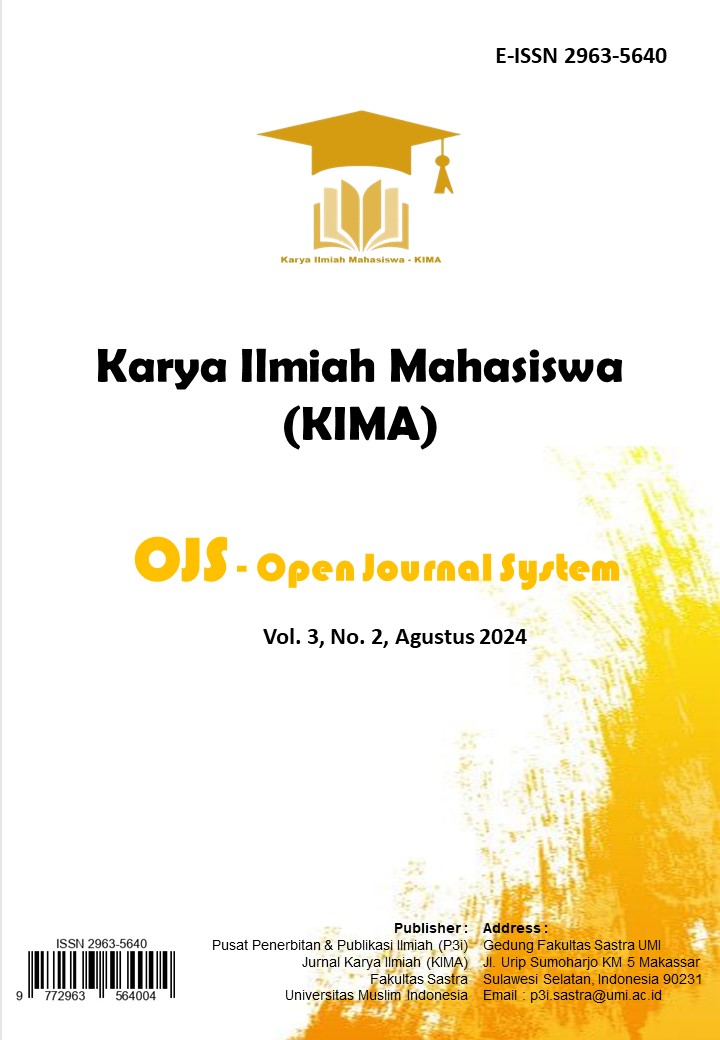THE IMPLEMENTATION OF PREDICTION STRATEGY IN IMPROVING STUDENTS’ READING COMPREHENSION IN ENGLISH RECOUNT TEXT AT SMP NEGERI 6 WONOMULYO
Keywords:
Prediction strategy, Reading comprehensionAbstract
To describe the implementation of prediction strategy in improving students’ reading comprehension in the English recount text. To describe the improvement of students’ reading comprehension through prediction strategy. The method of Classroom action research has a very important and strategic role to improve the quality of learning when implemented properly, it means that the parties involved in CAR (teacher) consciously develop the skill in detecting and solving the problem that happened when learning in the class through meaningful action. The subjects of this study were 30 students in the first year of SMP Negeri 6 Wonomulyo in the academic year 2021/2022. In this research, students’ Reading test scores were calculated using the SPSS 25. The result showed that students’ achievement in reading English words increased. This can be seen in the mean score of students on the pre-test which only reached 41 while after being given treatment three times, after being tested the mean score of their post-test increased to 68.5. This showed a significant increase so this method was effective in improving students’ English reading. Meanwhile, the result of the questionnaire showed that students enjoyed learning English by using the prediction strategy even though they still had some problems such as being shy or afraid, there were still unfamiliar words, and the duration of learning English was limited. So, the writer concluded that the use of prediction strategy as the English learning media was effective.
References
Edhitia Gloria. (1988). Developing Reading Skills For EFL Student. Jakarta: Departemen Pendidikan dan Kebudayaan.
Ismail, H., Syahruzah, J. K., & Basuki, B. (2017). Improving the Students’ Reading Skill Through Translation Method. Journal of English Education, 2(2), 124–131. https://doi.org/10.31327/jee.v2i2.405
Kartika, P., Rostini, D., Fajarianto, O., & Safitri, Y. (2020). The Effect of Social Media on Reading Intensity of Fifth Grade Elementary School Students. 429(Icasseth 2019), 215–218. https://doi.org/10.2991/assehr.k.200402.049
Khasinah, S. (2013). Classroom Action Research. Jurnal Pionir, Volume 1, Nomor 1, 1(2), 33–61.
Marliah, Lily. 2007. “Efficient Reading”. Jurnal Sosioteknologi, V (11) : 267 – 272.
Nuttal, C. (2005). Teaching Reading Skills in a Foreign Language. Oxford: MacMilan. Pp, 282(ISBN).
Rombot, O., Boeriswati, E., & Suparman, M. A. (2020). Improving Reading Comprehension Skills of International Elementary School Students through Blended Learning. Al Ibtida: Jurnal Pendidikan Guru MI, 7(1), 56. https://doi.org/10.24235/al.ibtida.snj.v7i1.6045
Saraswati, N., Dambayana, P., & Pratiwi, N. (2021). Jurnal IKA Undiksha | 34 An Analysis Of Students of Study Reading. 19(1), 1829–5282. https://doi.org/10.23887/ika.v19i1.31826
Sari, P. (2009). Exploring Reading Strategies to Understand Texts for English Students. TEFLIN Journal, 20(1), 37–47.
Shea, M., & Ceprano, M. (2017). Reading with understanding: A global expectation. Journal of Inquiry & Action in Education, 9(1), 48–68.
Wahjudi, A. (2010). Interactive post-reading activities that work. Jurnal Bahasa, Sastra, Seni, Dan Pengajarannya, 38(1), 84–92.




